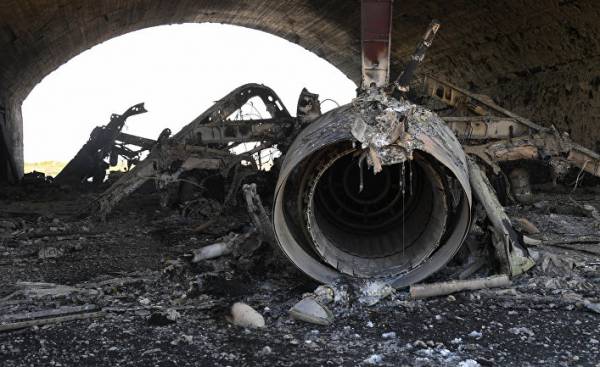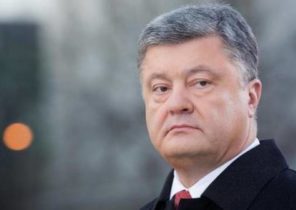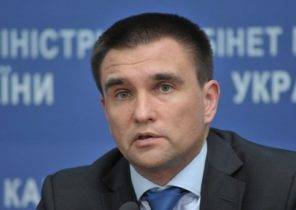
A rather sharp turn in the change of U.S. priorities in Syria — the elimination of Bashar al-Assad to fight ISIS (banned terrorist organizations — approx.ed.) is an important sign. In fact, the fight against ISIS is in fact what unites the policy of Russia and the United States in Syria.
Why America quite rapidly changed its priorities in Syria? What contributed to these changes and what are their consequences?
A) the United States from the beginning of the Syrian crisis in 2011, pursued a very definite policy towards Bashar al-Assad, insisting that the key to the Syrian settlement is the dismissal of the government headed by him.
At the same time, uncertainty about the future of Syria “after Assad” was just the problem, integrated and reliable solutions where the US in case his resolve was not offered. The policy which the United States declared against Syria, can be described in terms of the following three components:
1) the removal of Bashar al-Assad;
2) the fight against ISIS and terrorist groups;
3) support and strengthen groups opposing Assad and called USA the “moderate opposition”.
Paying attention to the above components of their policies, and significant differences of this policy from the strategy of Russia and Iran, the United States has characterized and has built its presence in Syria on the principle of “patience and waiting”. And thus, in the “shadow” of this policy, they tried to create conditions for its allies in the region, i.e. Saudi Arabia, Qatar and Turkey.
It appears that this policy was necessary in order that the position of Bashar al-Assad and the government forces of the Syrian confrontation with terrorists and extremists looked clearer. That is, in other words, which side in this confrontation will take up the top? This was an approach, in which American analysts did not promise anything good further presence in Syria of Bashar al-Assad, and for Russia meant a “new Afghanistan”.
From this we can recognize the persistence of war in Syria and the permanence of the Syrian crisis, the main strategy of the United States all those years. In this war against each other were the enemies of the United States in the region: religious extremism, “al-Qaeda” (banned in Russia as a terrorist organization — approx.ed.) and its offshoots on the one hand, and Syria and its allies Iran and Hezbollah on the other.
The continuation of the internal armed conflict has significantly reduced, as suggested by the United States, these two groups, and would reduce their morale and willingness to continue the war in the future.
However, the passage of time has demonstrated the fallacy of the predictions of the United States. Bashar al-Assad with all the problems that he was experiencing and the pressure that he was, continued his political existence, and quite firmly and effectively, and managed to regain some lost ground before, with the support of Hezbollah and Iran.
The arrival in Syria of Russia and its military support, as well as multicomponent Iran’s presence not only brought Syria and its government for the exit from the crisis and also weakened the position the USA and its allies. The situation after the liberation of Aleppo, has confused all the cards of the US and has jeopardized all their plans and schemes. In such circumstances, it is natural thing to do was efforts to find new ways of resolving their own issues and adopting some new and different strategies in order to somehow protect its interests in Syria.
B) the Official representative of the White House in recent weeks have said: “Assad has been a political reality that we have to take into account those conditions in which there are at the moment. Under the previous administration we have lost many of the opportunities that we had regarding Assad. Now we need to focus on how to defeat ISIS. The United States and in Iraq, and in Syria there are a lot of priorities. We all agreed that opposition to terrorism, and in particular the victory over IG is our top priority”.
Change of priorities in us policy in Syria — a departure from the goal of overthrowing Bashar al-Assad in the direction of victory over ISIS contains an important sign. In fact, the victory over the IG is a policy that is common both for Russia and for the United States being their main goal in the region. It appears that Washington, turning to cooperation with Russia, trying to build the policy, which is as follows:
1. With the help of rapprochement with Russia, he will also participate in the agreement, which will determine the political future of Syria.
2. Iran it turns out the main player in the player passive. In the new situation, contrary to the concepts that exist already, one should not assume Syria field of confrontation between USA and Russia. It should be viewed from another angle — as a kind of area where will be possible the coexistence. With the strengthening of the positions taken by Bashar al-Assad in the country, tacit, implicit support of its European countries and increasingly muffled-sounding calls for his immediate removal from power, America is also forced to accept this new situation on the battlefield reality, and gradually changed its approach to the question of the removal of Assad.
Accordingly, it is possible to assume that Russia is also gradually, contrary to its previous approach where it is believed all opponents of Assad terrorists, officially recognizes some opponents of the Syrian regime — that is, those who believe the United States does not terrorists, and the moderate opposition. And these two situations can create a plan that will gradually disappear all the differences of the two sides regarding Syria. Of course, the consequences that ultimately will cooperation between Russia and the USA in the framework of these agreements and further prospects is a question that should be seriously considered as events in Syria continue to evolve. It in no event it is impossible to overlook.







